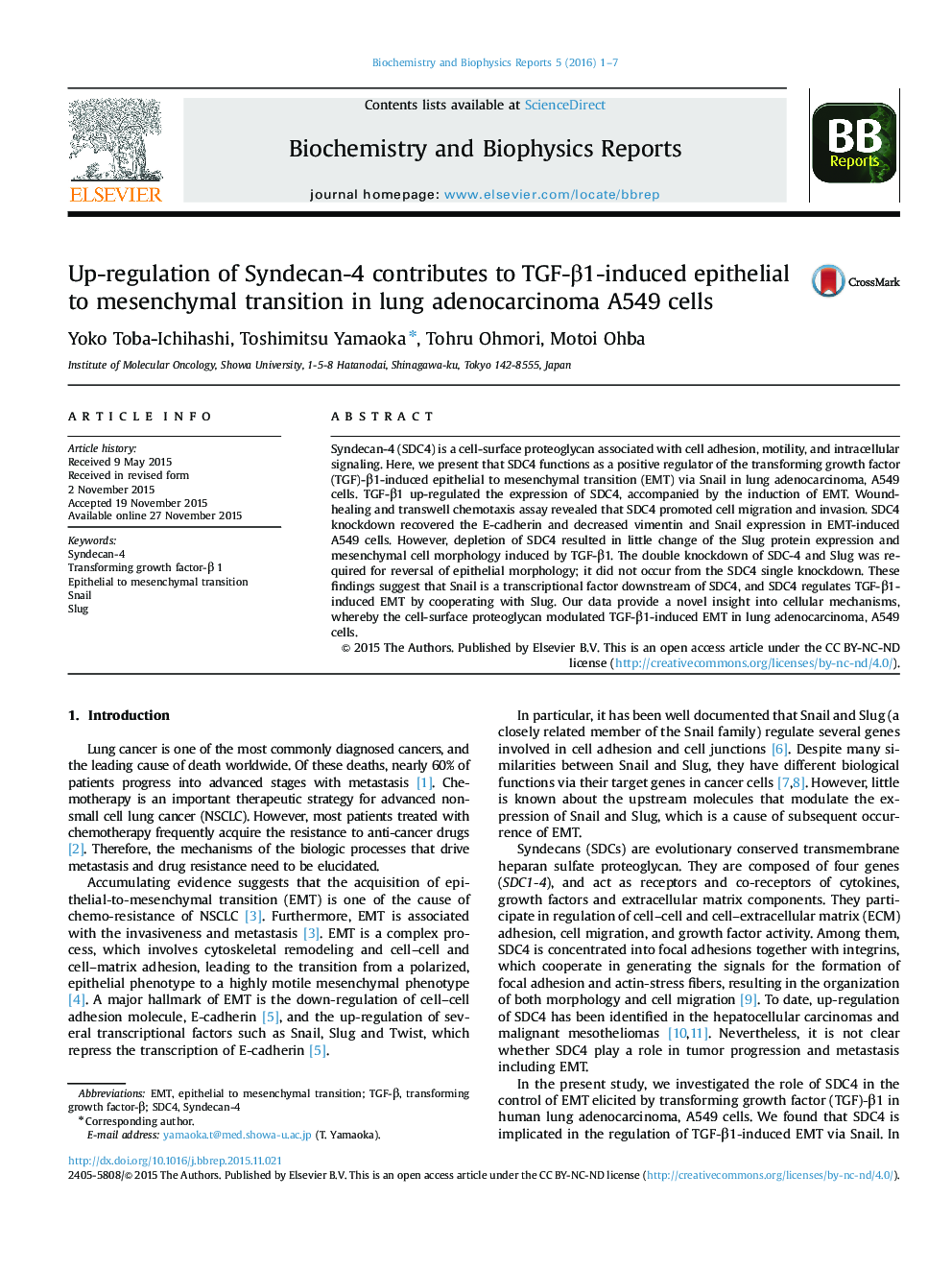| Article ID | Journal | Published Year | Pages | File Type |
|---|---|---|---|---|
| 1941697 | Biochemistry and Biophysics Reports | 2016 | 7 Pages |
•TGF β1 induced to increase SDC-4 expression with cells undergo EMT in A549 cells.•SDC-4 up-regulation leads to decreased E-cadherin expression via Snail.•Slug suppresses E-cadherin expression, independent from SDC-4 expression.•SDC-4 and Slug knockdown conserved an epithelial morphology in TGF-β exposure.•TGF-β induced β1 and β3 integrin alteration under SDC-4 and Slug knockdown.
Syndecan-4 (SDC4) is a cell-surface proteoglycan associated with cell adhesion, motility, and intracellular signaling. Here, we present that SDC4 functions as a positive regulator of the transforming growth factor (TGF)-β1-induced epithelial to mesenchymal transition (EMT) via Snail in lung adenocarcinoma, A549 cells. TGF-β1 up-regulated the expression of SDC4, accompanied by the induction of EMT. Wound-healing and transwell chemotaxis assay revealed that SDC4 promoted cell migration and invasion. SDC4 knockdown recovered the E-cadherin and decreased vimentin and Snail expression in EMT-induced A549 cells. However, depletion of SDC4 resulted in little change of the Slug protein expression and mesenchymal cell morphology induced by TGF-β1. The double knockdown of SDC-4 and Slug was required for reversal of epithelial morphology; it did not occur from the SDC4 single knockdown. These findings suggest that Snail is a transcriptional factor downstream of SDC4, and SDC4 regulates TGF-β1-induced EMT by cooperating with Slug. Our data provide a novel insight into cellular mechanisms, whereby the cell-surface proteoglycan modulated TGF-β1-induced EMT in lung adenocarcinoma, A549 cells.
